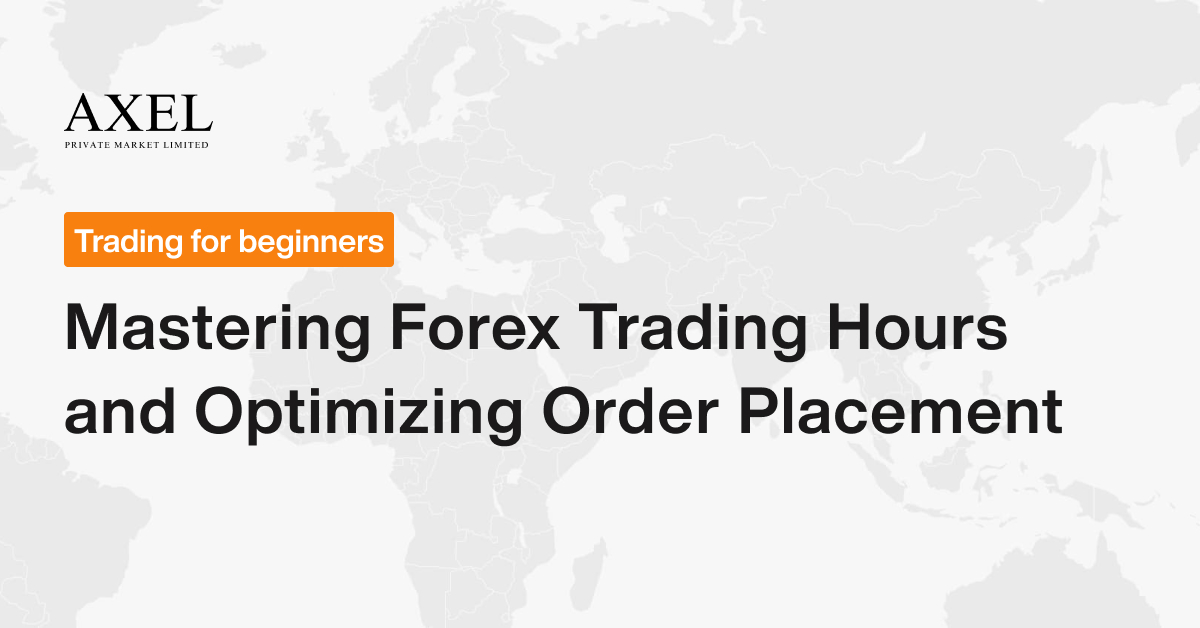INTRODUCTION
Understanding Forex Trading
Forex trading, or the foreign exchange market, is the largest and most liquid financial market in the world, with a daily trading volume exceeding $6 trillion. 1 In the Forex market, traders buy and sell different currencies with the goal of profiting from the fluctuations in their exchange rates. This market is attractive to traders for several reasons:
- High Liquidity: The Forex market is highly liquid, meaning that traders can easily enter and exit positions with minimal slippage or impact on prices. This allows for efficient execution of trades and the ability to capitalize on market opportunities.
- 24/7 Trading: The Forex market operates 24 hours a day, 5 days a week, providing traders with the flexibility to engage in the market at any time, regardless of their location or timezone. 2
- Leverage and Volatility: Forex trading offers the ability to use leverage, which can amplify potential profits (and losses). Additionally, the inherent volatility of currency pairs creates opportunities for traders to profit from price movements. 3
The Importance of an Effective Trading System
Given the dynamic and fast-paced nature of the Forex market, having an effective trading system is crucial for success. A well-designed trading system can help traders make informed decisions, manage risk effectively, and consistently generate profits over the long term. 4 By incorporating a robust trading system, Forex traders can:
- Implement a disciplined and systematic approach to their trading activities.
- Identify and capitalize on market trends and opportunities.
- Manage risk effectively, limiting potential losses and protecting their capital.
- Develop a consistent and repeatable trading process that can be refined and optimized over time.
Establishing an effective Forex trading system is the foundation for achieving long-term success in this dynamic and lucrative market.
UNDERSTANDING THE FOREX MARKET
The Forex market, also known as the foreign exchange market, is a decentralized global market where different national currencies are traded. This dynamic market is characterized by several key features that make it unique and attractive to traders:
Key Characteristics of the Forex Market
- High Liquidity: The Forex market is the world’s most liquid financial market, with a daily trading volume exceeding $6 trillion. 1 This high level of liquidity allows for efficient execution of trades and the ability to enter and exit positions with minimal slippage or impact on prices.
- 24/7 Trading: Unlike many other financial markets, the Forex market operates around the clock, 5 days a week. This 24-hour trading environment provides traders with the flexibility to engage in the market at any time, regardless of their location or timezone. 2
- Volatility: The Forex market is inherently volatile, with currency pairs constantly fluctuating in value due to a variety of economic, political, and social factors. This volatility creates opportunities for traders to profit from the price movements of different currency pairs. 3
Major Currency Pairs and Economic Factors
The Forex market primarily consists of trading in major currency pairs, such as the EUR/USD, GBP/USD, USD/JPY, and USD/CHF. Each of these currency pairs has unique characteristics and is influenced by various economic factors:
- EUR/USD: This is the most heavily traded currency pair, reflecting the strength of the Euro and the US Dollar. It is impacted by factors such as the monetary policies of the European Central Bank and the US Federal Reserve, as well as economic data from the Eurozone and the United States.
- GBP/USD: Also known as the “cable,” this pair reflects the value of the British Pound against the US Dollar. It is influenced by the Bank of England’s monetary policy decisions, Brexit-related developments, and economic indicators from the UK and the US.
- USD/JPY: The US Dollar-Japanese Yen pair is affected by the monetary policies of the Bank of Japan, as well as the relative strength of the US and Japanese economies, trade balances, and investor risk sentiment.
- USD/CHF: The US Dollar-Swiss Franc pair is often seen as a safe-haven trade, with the Swiss Franc perceived as a stable currency. This pair is sensitive to global economic and political uncertainties, as well as the monetary policy stance of the Swiss National Bank.
In the Forex market, these currency pairs, along with numerous other cross-pairs, constantly fluctuate in value, driven by a complex interplay of economic, political, and social factors. Understanding these key drivers is crucial for traders to make informed decisions and develop effective trading strategies.
IDENTIFYING YOUR TRADING APPROACH
When it comes to Forex trading, there are several distinct trading styles that traders can adopt, each with its own unique characteristics and requirements. Selecting the most suitable trading approach is crucial for traders to align their strategies with their risk tolerance, trading goals, and personal preferences.
Forex Trading Styles
- Scalping: Scalping involves taking small, frequent profits by opening and closing multiple trades throughout the day. Scalpers aim to capitalize on minor price movements, often using high leverage and tight stop-loss orders to manage risk. This trading style requires quick decision-making, strong discipline, and the ability to handle intense market volatility.
- Day Trading: Day traders seek to open and close positions within the same trading day, taking advantage of intraday price swings. This approach requires close monitoring of the markets, the ability to make rapid decisions, and a strong understanding of technical analysis and market sentiment.
- Swing Trading: Swing traders focus on medium-term price movements, typically holding positions for a few days to a few weeks. This trading style involves the identification of emerging trends and the placement of trades to capitalize on potential price swings. Swing traders often utilize a combination of technical and fundamental analysis.
- Position Trading: Position traders take a long-term view of the markets, holding positions for weeks or even months. This approach involves the analysis of broader economic and geopolitical trends, as well as the identification of long-term support and resistance levels. Position traders typically have a higher risk tolerance and a more patient, disciplined trading mindset.
Determining Your Trading Approach
When selecting a trading approach, it is crucial for traders to engage in self-assessment and identify their own risk tolerance, trading goals, and personal preferences. Consider the following factors:
- Risk Tolerance: Assess your willingness to accept volatility and potential losses. Scalping and day trading may suit traders with a higher risk appetite, while swing and position trading may be more suitable for those with a lower risk tolerance.
- Trading Goals: Determine whether your primary objective is to generate consistent, small profits (scalping), capitalize on short-term price movements (day trading), ride medium-term trends (swing trading), or build long-term wealth (position trading).
- Personal Preferences: Consider your trading schedule, access to market information, and the amount of time you can dedicate to monitoring the markets. Your personal traits, such as decision-making speed, patience, and discipline, can also influence the most suitable trading style.
By carefully evaluating these factors, traders can identify the Forex trading style that aligns best with their risk profile, trading goals, and personal characteristics, increasing their chances of long-term success in the dynamic Forex market.
DEVELOPING A FOREX TRADING SYSTEM
Building an effective Forex trading system involves the integration of several key components that work together to create a comprehensive and profitable trading strategy. Let’s explore the essential elements of a successful Forex trading system:
Key Components of an Effective Forex Trading System
- Market Analysis and Research: Conducting thorough market analysis and research is the foundation of an effective Forex trading system. This includes the study of economic indicators, monetary policies, geopolitical events, and other factors that can influence currency price movements. Traders should also stay up-to-date with the latest news and trends in the Forex market.
- Trend Identification and Trade Entry/Exit Signals: An essential aspect of a Forex trading system is the ability to accurately identify market trends and determine appropriate entry and exit points for trades. This can involve the use of technical analysis tools, such as chart patterns, indicators, and oscillators, as well as the integration of fundamental analysis to confirm the underlying market direction.
- Risk Management Strategies: Effective risk management is crucial in Forex trading. A well-designed trading system should incorporate strategies to limit potential losses, such as stop-loss orders, position sizing, and diversification across multiple currency pairs. Traders should also understand and account for the impact of leverage on their risk exposure.
- Money Management Principles: Successful Forex trading requires the implementation of sound money management principles. This includes the allocation of appropriate capital to each trade, the establishment of risk-reward ratios, and the utilization of stop-loss and take-profit orders to protect profits and limit losses.
Backtesting and Optimization
Once the key components of a Forex trading system have been defined, it is essential to backtest and optimize the system using historical market data. Backtesting involves simulating the trading system’s performance on past market conditions, allowing traders to evaluate the system’s effectiveness, identify areas for improvement, and fine-tune the trading rules and parameters.
Through the process of backtesting and optimization, traders can:
- Assess the system’s profitability, win-rate, and risk-reward ratios under various market conditions.
- Identify the optimal entry and exit points, as well as the most effective risk management techniques.
- Refine the system’s parameters, such as indicators, time frames, and position sizing, to enhance its performance.
- Develop contingency plans and alternative trading strategies to adapt to changing market environments.
By systematically backtesting and optimizing their Forex trading system, traders can increase the likelihood of achieving consistent and sustainable profits in the dynamic Forex market.
IMPLEMENTING AND REFINING YOUR TRADING SYSTEM
Having developed a comprehensive Forex trading system, the next critical step is to effectively implement and continuously refine it to adapt to the ever-changing market conditions. This process involves cultivating key traits and implementing strategies to ensure the long-term success of your trading approach.
Discipline, Emotional Control, and Consistency
Successful Forex trading requires a high degree of discipline, emotional control, and consistency in executing your trading system. These factors are essential for maintaining the integrity of your system and maximizing its performance:
- Discipline: Adhering to the rules and parameters of your trading system, even during times of market volatility or uncertainty, is crucial. Maintaining a disciplined approach helps you avoid the temptation to make impulsive decisions that can derail your trading plan.
- Emotional Control: Emotions, such as fear, greed, and overconfidence, can significantly impact your trading decisions and lead to suboptimal outcomes. Developing the ability to recognize and manage your emotions is crucial for consistent and profitable trading.
- Consistency: Executing your trading system with consistency, regardless of market conditions, is essential for achieving consistent results. Developing a routine and following a well-defined trading process can help you maintain a disciplined and systematic approach to your trading activities.
Continuous Monitoring, Evaluation, and Refinement
To ensure the long-term effectiveness of your Forex trading system, it is essential to engage in continuous monitoring, evaluation, and refinement. This iterative process allows you to adapt to changing market dynamics and optimize your system’s performance:
- Continuous Monitoring: Closely monitor the performance of your trading system in real-time, tracking key metrics such as win rates, risk-reward ratios, and overall profitability. This vigilance will help you identify any deviations from your system’s expected performance.
- Performance Evaluation: Regularly evaluate the effectiveness of your trading system by analyzing its performance across various market conditions. This may involve adjusting parameters, testing new strategies, and identifying areas for improvement.
- System Refinement: Based on your performance evaluation, make informed adjustments to your trading system to enhance its efficacy. This may include fine-tuning entry and exit signals, optimizing risk management techniques, or incorporating new market insights.
By cultivating discipline, emotional control, and consistency, and continuously monitoring, evaluating, and refining your Forex trading system, you can increase your chances of achieving sustainable success in the dynamic and fast-paced Forex market.
CONCLUSION
In this article, we have explored the key aspects of building an effective Forex trading system. Let’s summarize the main takeaways:
Key Takeaways
- Understanding the Forex Market: The Forex market is characterized by its high liquidity, 24/7 trading, and inherent volatility, offering both opportunities and challenges for traders.
- Identifying Your Trading Approach: Selecting the most suitable trading style, such as scalping, day trading, swing trading, or position trading, is crucial. This decision should be based on your risk tolerance, trading goals, and personal preferences.
- Developing a Forex Trading System: An effective Forex trading system should incorporate comprehensive market analysis, trend identification, risk management strategies, and sound money management principles.
- Backtesting and Optimization: Thoroughly backtesting and optimizing the trading system using historical data can help traders refine their strategies, identify the most effective parameters, and adapt to changing market conditions.
Continuous Improvement and Long-Term Success
Building an effective Forex trading system is an ongoing process that requires dedication, experimentation, and a willingness to learn and adapt. As you embark on your Forex trading journey, remember to:
- Continuously expand your knowledge of the Forex market, economic factors, and trading techniques.
- Experiment with different strategies, constantly evaluating their performance and making adjustments as needed.
- Develop a disciplined and systematic approach to your trading activities, maintaining emotional control and adhering to your trading plan.
- Embrace the concept of continuous improvement, regularly reviewing and refining your Forex trading system to enhance its effectiveness.
By following these principles and maintaining a dedication to your trading education and skill development, you can increase your chances of achieving long-term success in the dynamic and lucrative Forex market.





